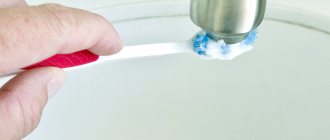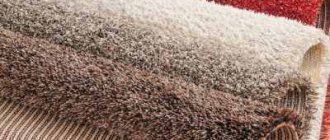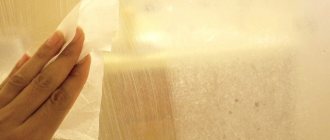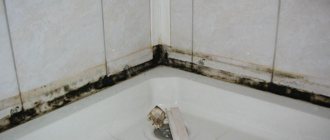Recently, bronze plumbing fixtures have become increasingly popular. This is a spectacular product, endowed with all the advantages of a noble metal. But the joy of acquisition and use can be overshadowed by the appearance of stains and plaque. In this material we will talk about how to properly use bronze taps and how to care for them. And, of course, we will learn the features of cleaning such a sensitive surface.
General recommendations
Bronze ball valves are a real breakthrough in the modern construction world. No one can resist stylish, spectacular and noble faucets. But during the purchase, many simply do not think about what troubles they are dooming themselves to. Only regular cleaning with the right products can ensure the necessary disinfection and neat appearance in the kitchen or bathroom. To begin with, we want to give some general recommendations for cleaning plumbing:
- it is necessary to select cleaning products based on the type of coating;
- When cleaning, pay great attention to the cleanliness of the aerator - this is where the largest amount of dirt, rust and pathogenic bacteria accumulate;
- You should not use abrasive agents to clean bronze taps, as they can damage the surface of the product;
- for cleaning, use a soft, lint-free cloth; if you use a sponge, treat the product with its soft side;
- After finishing cleaning, wipe the faucet with glass cleaner - just a few drops of the product are enough to restore the shine and radiance of your plumbing fixtures.
General rules for cleaning faucets
The chrome surface is easily damaged due to improper mechanical and chemical influences. The following recommendations will help you avoid the formation of defects on the mixer and make work comfortable:
- To remove plaque from chrome plating, it is unacceptable to use any rough materials, such as metal brushes and scrapers, hard sponges and graters. Otherwise, scratches and oxidation of the coating in places of damage are inevitable. Subsequently, further oxidation and contact with water will lead to rust.
- Do not use abrasive substances, products based on chlorine (Domestos, Belizna) and aggressive acids (phosphoric, sulfuric, hydrochloric, as well as concentrated formic and oxalic). They are really great at removing limescale, but they come into contact with metal surfaces, forming black dots and dark spots on them. As a rule, it is impossible to remove such defects. Typically, the instructions on the packaging of such cleaning products indicate the area of use and contain a special warning “Do not use on chrome surfaces.” Therefore, you should not neglect reading this information.
- After removing dirt, the mixer and taps are polished with a cloth - this way the surfaces will remain shiny longer.
- Hard-to-reach areas can be cleaned well with old toothbrushes and kitchen bottle brushes.
- Aluminum foil soaked in water effectively removes rust from a chrome surface. Aluminum reacts with the damaged surface and removes stains.
- The exposure time to cleaning agents, especially professional ones, should not be exceeded.
- When working with vinegar and household chemicals, be sure to thoroughly ventilate the room. Inhalation of acid fumes and other volatile compounds may cause allergic reactions and irritation of the upper respiratory tract.
Vinegar
If you need to clean bronze taps for the kitchen or bathroom, use a mixture of vinegar, salt and flour - these components are likely to be found in the arsenal of every modern housewife.
To prepare this miracle remedy, you will need a tablespoon of 6% vinegar, salt and wheat flour. All components must be mixed together until a homogeneous consistency is obtained, and the resulting slurry should be evenly distributed over the surface of the plumbing fixtures using a soft sponge and left in this state for 10-15 minutes. After this, you need to thoroughly rinse the product with cool water and wipe dry with a soft cloth, preferably microfiber.
Prevention of plaque formation
Home and professional remedies allow you to cope even with old plaque. But the complex shape of faucets and their parts makes the cleaning procedure quite tedious. The need for it will appear much less frequently if you take the following measures:
- Avoid the formation of stubborn dirt and clean the faucet surface regularly.
- Periodically disassemble the faucet and clean the internal parts of the structure, the aerator and the shower head.
- Apply a protective water-repellent layer. Some commercial faucet products are designed to simultaneously clean, polish and create a protective layer on the surface. Finding them is not so easy, and professional solutions are expensive. The easiest way to make an oil coating at home is. For this purpose, cosmetic vegetable oil is recommended, but refined table oil is also suitable. The surface is lubricated with a sponge dipped in oil and then polished with a napkin. This will not prevent plaque from forming, but it will be removed much easier. An oily surface is poorly wetted by water droplets, and most of them will run off the surface. Therefore, overall there will be fewer spots.
- Use a wax-based polish. On construction forums, there are recommendations for the use of wax polishes for chrome coatings of automobile parts. Not a very common option, but there are positive reviews about it. However, before you decide to use such products in a residential area, you should make sure that they are safe: car cosmetics are often toxic.
- Install main water softening filters. Various designs are offered for sale, which differ in operating principle, efficiency and price. There are mechanical, carbon, electromagnetic, ion exchange and reverse osmosis filters for tap water. The most effective are ion exchange and reverse osmosis. But real reviews about their effectiveness are mixed. In addition, the first type requires constant financial costs and significantly increases water consumption. The second type is distinguished by its oversized design, for which it is difficult to find a place in a standard apartment. If you still decide to install such a filter, then, first of all, do a water analysis and determine the ratio of hardness salts to the total amount of salts. This is necessary for correct calculation of installation parameters.
To finally solve the problem with plaque, it is necessary to eliminate its cause. To do this, it is important to prevent the formation of persistent stains and regularly care for the structure. If it is possible to install a high-quality water softening filter, this may be a good solution. With this approach, the surface of taps and mixers will always be shiny, and their operation will be flawless.
Advice! If you need bathroom renovation specialists, there is a very convenient service for selecting specialists from PROFI.RU. Just fill out the order details, the experts will respond and you can choose who to collaborate with. Each specialist in the system has a rating, reviews and examples of work, which will help with the choice. Looks like a mini tender. Placing an application is FREE and does not oblige you to anything. Works in almost all cities of Russia.
If you are a master, follow this link, register in the system and be able to accept orders.
Linseed oil
It’s hard to call this product popular; it’s unlikely to be on every housewife’s shelf. But if flaxseed oil is present in your diet, we recommend finding another equally beneficial use for it. This is an excellent prevention of dullness and plaque on the surface of bronze plumbing fixtures. All you have to do is periodically apply a thin layer of oil to the tap.
Industrial products
If traditional methods turn out to be ineffective, you can use industrial household chemicals or professional compounds. Almost all popular manufacturers produce a special line of cleaning products against plaque on faucets. But when purchasing a product from a well-known brand, you need to make sure that it is suitable for faucets and that it is not caustic for toilets, for example.
Among household chemicals for removing plaque, the most common products are Cif, Sillit and SunClean. More expensive options can be found from Ravak, Grohe and HG.
Lemon juice
Don't know how to clean bronze taps? Use the old proven method - lemon juice. To do this, cut a medium lemon in half, sprinkle its half with ordinary table salt, and then treat the surface of the plumbing with it.
Bronze taps, however, like brass products, unfortunately, very quickly lose their effectiveness and become dull. Therefore, in order to restore them to their original appearance and cope with even the most serious and stubborn stains, use a special paste - Trilon-B. You can find it at a hardware store.
Reasons for the appearance of plaque on bronze products
Bronze is an alloy of four metals (tin, copper, lead, zinc), which, under the influence of external factors, are destroyed, tarnished and darkened. The main enemy of the material is high humidity or water, which leads to oxidation and the appearance of a green coating. Patina gradually destroys the metal, leaving dents and unsightly marks on the surface.
Scratches and chips that occur as a result of improper care, use or storage increase the risk of damage to the product.
The main reason for the appearance of greenery is frequent contact of a bronze object with water or its constant presence in places with high humidity.
We fight stubborn dirt in hard-to-reach places
Modern manufacturers, trying to win the love of consumers, offer faucets of very fancy, non-standard, to put it mildly, shapes. By the way, they are especially popular, but few people think about how difficult it is to clean hard-to-reach places when purchasing. Take advantage of our tricks:
- Toothbrush. An ordinary old toothbrush works great for removing dirt from hard-to-reach places. Use it to distribute the cleaning solution over the contaminated areas. An excellent remedy is baking soda with a few drops of lemon juice. If necessary, you will need to make a small effort to remove all old stains.
- Dental floss. Who would have thought that ordinary dental floss would help remove stains from hard-to-reach places. Measure about 20-30 cm of thread and use it to remove dirt from joints and all hard-to-reach places. Housewives who have used this recommendation have already confirmed the effectiveness of the method.
How to clean an aerator and shower head
The following signs indicate that the watering can and aerator are clogged:
- Uneven flow of water that periodically increases or decreases.
- Changing the direction of the flow - it can hit in different directions. Under the pressure of the system, water breaks through where there are still unclogged holes. This is often accompanied by characteristic sharp sounds.
- A very weak stream of water or its absence - in such cases, deposits of water stone completely block the flow of water.
To clean the aerator from limescale, you need to disassemble it, remove dirt and reassemble it. The procedure is as follows:
- The aerator consists of a rubber gasket, a mesh filter and a clamp with which the structure is attached to the tap. This fastener is unscrewed with a key for aerators. This must be done carefully, since at this stage the filter may break, especially if it is made of plastic. If there is no special key, this can be done using pliers, having first wrapped the aerator in a piece of cloth so as not to damage the surface.
Aerator key. - If plaque has formed on the thread of the fastener, it may not be possible to remove it immediately. In this case, you can wrap the structure with a rag soaked in a warm vinegar solution. After half an hour, thread mobility is usually restored. If this method does not help, then pour the vinegar solution or liquid special agent into a plastic bag and put it on the aerator, fixing it on the tap.
- The disassembled parts are treated in any suitable product, for example in the same acid, washed with water and reassembled.
The shower head is cleaned in the same way. It is advisable to disconnect the watering can. If this does not work or disconnection is not provided for by the design (the watering can is permanently attached to the wall), treat the surface with a cleaning agent according to the instructions. In case of heavy plaque, you can use the method described above with a bag, which is filled with a vinegar solution, immersed a watering can in it and fixed around it.
Another option is to disconnect the watering can along with the hose and place all the parts in a bowl with the working solution. This is the most convenient way to clean the hose.
To clean the inside of the watering can, it is disassembled in this order:
- Remove the plug on the sprayer.
- Unscrew the screw under the plug.
- Remove the filter and gasket.
- After treating with a cleaning agent, it is convenient to clean the clogged holes of the hydromassage nozzle with an old toothbrush, toothpick or pencil.
Do the same if you need to clean the inner surface of the mixer from plaque. It is disassembled taking into account the design features and carefully inspected. If rust is detected, treatment begins with its removal. Rusty areas are cleaned with sandpaper, a metal scraper or a brush. Once the damage has been removed, the faucet can be soaked in the cleaning solution, just like the aerator or shower head and hose. Also, treating the inner surface with a spray bottle has a positive effect.
Note: Sometimes the cause of low water flow is not the watering can, but the hose. This can be checked by disconnecting the hose from the watering can and running water through it. If it does not flow out or flows out poorly, it is the hose that is clogged.
Laundry soap
Instructions on how to clean a faucet with soap include the following steps:
Dissolve the soap in hot water. To save time, you can grate the soap. This way it will dissolve much faster. The consistency of the working medium is approximately that of thin sour cream. To enhance the effectiveness of the mixture, add a little soda to the solution and stir.
Apply the solution to the surface of the faucet using a rag, leave for an hour and rinse the plumbing under running water. The method allows you to remove plaque that has recently formed. But how to tidy up faucets with old plaque?
Baking soda
A universal product that can cope with almost any household pollution. You need to prepare a special product - add a certain amount of water to make a thick substance. The faucet is lubricated with this mixture (does not rub in!). Literally after half an hour or an hour, it is washed off, and the cleaned area is thoroughly polished with a cloth. This method will help if there is not too much plaque yet, and therefore it has not had time to eat in. It is necessary to prepare a concentrated soap solution, moisten a kitchen or bath sponge in it, and then wipe the mixer with it. Next, you need to thoroughly rinse off the substance and polish the cleaned areas with flannel.
Lemon
You can also use lemon
. Squeeze the juice onto a rag and wipe down your faucet. Wash and wipe the product with a dry cloth. This method is also quite effective even in the fight against old plaque.
You can clean the faucet using lemon in this simple and economical way.
- Cut the lemon in half
- Squeeze the juice out of it.
The juice can be used for culinary purposes; there is no point in wasting it on cleaning the tap.
The purity of tap water is the key to the “health” of the mixer. If it is soft enough, the faucet will remain sparkling clean and require minimal maintenance. But when there is a high concentration of mineral salts in the water, this leads to the appearance of a dense coating on the faucet. However, if you know what and how to clean the faucet from limescale, the problem can be solved in a matter of minutes.
Conclusion
We have studied in detail the disassembly and cleaning of the main types of faucets. You are convinced that this can be easily done with your own hands. Be sure to watch the video in this article and if you have questions, ask them in the comments.
Tap water with a high content of magnesium and calcium salts (“hard water”) is a fairly common phenomenon. Its unpleasant consequences are the appearance of whitish stains and lime deposits on plumbing fixtures, bathtubs or tiles.
Old limescale deposits are difficult to remove during normal cleaning
, so you will have to use special cleaning preparations or folk remedies.
How to remove limescale from a tap: basic mistakes
Before starting the procedure, you should familiarize yourself with the following recommendations:
- metal jaws can damage the surface of the taps;
- cleaning agents containing large abrasive particles can ruin the appearance of faucets;
- products containing hydrochloric, sulfuric or phosphoric acid contribute to the formation of dark spots;
- Do not mix different cleaning agents to avoid unexpected results.
Following these simple rules will help your plumbing equipment maintain a decent appearance for a long time.
How to clean copper
Copper has long been used to make dishes, jewelry and many other household items. In this article we will talk about how to clean copper and how to properly care for copper products.
Copper cookware is valued for its strength, durability and good thermal conductivity.
If improperly or irregularly cared for, items made from this metal may lose their shine, oxidize, darken, or become covered with a green coating. We'll tell you how to avoid these troubles.
What is copper?
Copper is a ductile, but at the same time durable metal of a reddish-brown color. It is one of the main elements of the periodic table. The copper-based alloy is used to make other metals such as bronze and brass.
The scope of application of this metal is extremely wide. Due to its strength, it is in great demand in construction for the manufacture of wires, fittings, copper mesh, wires and other things. In the agricultural industry, copper is used as part of copper sulfate. Most wind musical instruments are made from copper. This metal is also widely used in the creation of plumbing pipes.
Despite the fact that copper is not a precious metal, it is also in demand in jewelry. You can find a lot of beautiful and very elegant copper jewelry: bracelets, crosses, chains, earrings, rings, etc. Also, to make gold jewelry more durable, an admixture of copper is used.
Copper cezves (Turks) have long become a popular accessory for lovers of delicious coffee.
Products made from this metal can often be found in the kitchen. Due to its resistance to corrosion and good heat conductivity, copper is used to make a huge variety of kitchen utensils: teapots, pots, trays, cauldrons, cezves, kettles, etc.
It would also not be superfluous to add that in the old days, along with gold and silver, copper was used to make coins, which the common people called copper coins. Many coins have survived to this day.
Copper coin from the times of Tsarist Russia
Unfortunately, in the absence of proper and timely care, copper objects can lose their original shine, become dirty and become cloudy. Let's talk about the main rules that must be followed when caring for copper products.
Basic rules for caring for copper products
By following these simple guidelines, you can keep your copper items looking beautiful:
- If you use copper cookware, always keep it clean. After each use, thoroughly clean and dry the product.
- When using copper utensils, it is not allowed to clean them with abrasives, compounds based on chlorine, ammonia and other aggressive components. Also, do not clean copper cookware with hard brushes or scrapers. These products may damage the metal surface.
- For the same reason, you should refrain from using metal spoons and spatulas, giving preference to utensils made of wood, plastic or silicone.
- If you wear copper jewelry, try to wipe it with a damp cloth after each wear. This way you will remove sebum and dust from the metal surface and can avoid serious contamination. Remember to dry the items with a soft cloth such as velvet or flannel.
- It is recommended to store copper jewelry in separate boxes, wrapping each of them with a piece of soft material. Direct sunlight on decorations and their proximity to heating devices is not allowed.
- For better preservation, it is recommended to coat the products with a layer of special varnish for metal surfaces. Check the coverage from time to time and update it. This way, you are guaranteed to protect your favorite item from plaque and stains that are difficult to remove, and will help your jewelry look great.
Copper jewelry always attracts attention with its unusual appearance and original shine.
If you are going to wear copper items often, we recommend varnishing them. If you follow these simple tips, you can significantly extend the life of copper items.
Remember that copper cookware should not be washed in the dishwasher. Hand washing and cleaning are recommended.
Cleaning methods
If contamination cannot be avoided, we suggest that you familiarize yourself with effective cleaning methods.
Dishwashing liquid (to freshen)
This method is the simplest and is suitable for cleaning off minor dirt and refreshing the product. You will need:
- dishwashing liquid;
- pelvis;
- soft sponge.
Fill a basin with warm water and add a few drops of detergent. Lather well. Place the product in the resulting soap solution and leave for a while. Then take a sponge and remove the soaked dirt from the surface of the metal. Upon completion of the procedure, rinse the item thoroughly under running water and wipe dry.
Citric acid (from green plaque)
- lemon acid;
- warm water (preferably distilled).
First, prepare a 10% solution of citric acid: mix 10 g of powder with 100 g of warm water. Place a copper product in the solution and watch it: you will see how the greenery will separate from the surface of the metal and color the liquid green. Once all the plaque has been dissolved, remove the product and rinse thoroughly under running water.
If you don’t have citric acid on hand, rub half a lemon on the surface of the metal and leave for a while. Then rinse the product.
You can remove cloudy deposits and refresh copper items using regular dishwashing detergent.
Vinegar + salt (for dark spots)
If dark oxide spots appear on copper products, we recommend the following method. Prepare the following components:
- table vinegar;
- table or sea salt.
Mix 1 cup of bite with 1-2 tbsp. l. salt. Without waiting for the salt to completely dissolve, place copper objects in this mixture and lightly rub the surface of the products with salt. You will see the result instantly - there will be no trace of oxidation left. When finished cleaning, rinse items thoroughly and wipe dry.
Tomato paste/ketchup (from blackness)
This seemingly unusual method has actually proven itself well for cleaning copper products from blackness. You will need:
- tomato paste or ketchup;
- a piece of cotton fabric.
Apply a generous amount of ketchup to the product and leave for 1 hour. After time has passed, rub the copper object well with a piece of cloth and rinse with water. This method will help not only effectively remove stains, but also restore the brightness of the color of the metal.
Flour + salt + vinegar (for shine)
This method will help you not only wash away dirt, but also give the product a dazzling shine. You will need:
- Wheat flour;
- salt;
- table vinegar.
Mix the ingredients in equal parts and rub the resulting mixture onto the copper object. Leave it for a while. Then rinse the items well under running water and wipe dry.
To polish copper objects, we recommend using sheets of black and white newspaper. Crumple a few pages and walk the resulting lump over the surface of the metal. The product will shine like new!
Reasons for low water pressure
A person strives to equip his own home, making every possible effort to create special comfort. Regarding the installation of new plumbing, in this way a person shows concern for himself and his family. Phenomena over which the home owner has no control are the work of centralized systems. These include water supply, electricity or gas supply. Preventing problems of this kind is extremely difficult and quite expensive, considering the cost of calling emergency services. There remains an alternative option - to independently understand the reasons for the decrease in water pressure in the tap. To begin with, you should inspect the main taps and identify the root cause of the breakdown. Failures in the operation of systems are akin to a disease in humans; if the disease is eliminated, the symptoms will go away over time.
Common reasons for a sharp decrease in water pressure in a residential building:
- clogged pipes or faucets;
- blockage in the main part of the underwater pipe;
- reduction in overall pressure in the pipeline;
- breakdowns in a separate water supply line during home improvement.
Global problems cannot be resolved on your own, but minor problems disappear in a matter of hours. The faucet, made of different metal alloys, may rust in the inner part in contact with the stream of water. This happens when the liquid that ends up on the table of the residents of the house does not meet accepted standards.
Poor quality material can cause annoying damage. Scale is one of the most common problems leading to a decrease in water pressure.
Rules for caring for the alloy at home
Before you start cleaning the product, it is important to make sure that it is accurately made of brass. Many objects appear to be brass in appearance and tactile sensations, but are made of similar metals. To check, you need to attach a magnet to the surface, and if it does not stick, then it is brass.
If an item begins to fade over time, it is not necessary to clean it. Darkening does not always mean that the top layer has begun to oxidize, and such an external change has its own attractiveness.
To protect the product without extensive cleaning, simply coat it with a polishing compound and lightly wipe it.
Household chemicals against “water stone”
If you don’t trust folk remedies, you can use household chemicals.
Read the instructions carefully and don't forget to wear rubber gloves to protect your hands from the harmful effects of chemicals.
On sale you will find many products designed specifically for the care of steel and chrome surfaces; they will help not only clean the plumbing, but also polish it to a perfect shine. All these products are divided into two categories: cleaners and polishes; it is advisable to have both at home.
Cleaners: “Top House for stainless steel” (Germany), “CILLIT BANG for metal surfaces” (Russia), “Pufas Glutoclean” (Germany), “Sanox” (Hungary), “electrolux stainless steel cleaner spray” (Sweden), “Selena Steel Shine” (Russia), “NEOBLANK” (maintains and lubricates moving metal joints) country (Czech Republic), “HG” (Netherlands), “SVOD-Effect” (Ukraine) and many others.
Polishes: “Wpro 29945”, “Domax”, “Indesit”, “HG Steel Polish”, etc. The polish is applied with a soft cloth to a dry, clean surface and polished to a mirror shine. Cleaners and polishes can be used not only for plumbing, they are also suitable for caring for any metal surfaces: steel plates, sinks, refrigeration equipment, chrome parts of furniture, stainless steel dishes.
Some metal care products create a thin film that temporarily protects the chrome surface from corrosion, limescale and greasy fingerprints. Instead of polish, you can use glass washing liquid; of course, it does not create protection, but with due diligence, a beautiful shine is guaranteed.











